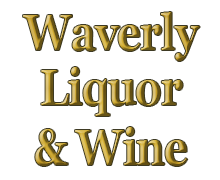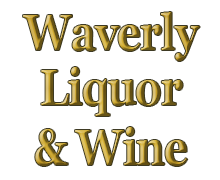Follow Us x
Do You Know What Makes Spirits Spirited?
Read on for a primer about the strongest of alcoholic beverages
Spirits derive from the distillation of grain-as opposed to wines, which depend on the juice of grapes for their substance. There's a lot more to the science and enjoyment of spirits (aka liquor), of course- and thus this page.
While we're still putting together our short essay on the various types of liquor and what makes them distinctive, please do check back because it won't be long before that information is posted here for your edification.
In the meantime, be sure to call us at 607-565-9221 with any questions you may have about our inventory. We look forward to speaking with you.
Aperitifs
These are flavorful liquors or wines that are meant to stimulate your appetite and awaken sleeping taste buds before a meal. Some of the most notable Aperitifs are vermouth, Champagne, dry styles of Sherry, and fruit brandies, They can all be considered Aperitifs even though you may not always drink them before a meal.
Blended Whiskey
Whiskey from all over the world has producers who make blends. Scotland, Ireland, Canada and the U.S. all have variations on their respective single batch spirits. The usual method for making blends is to distill a few different batches of whiskey that are not intended for Single Malt or Single Barrel status. The distiller combines the whiskies in a way that produces the best mix that the distiller has to offer. Another advantage is the whiskies can be more consistent year after year.
Bourbon
Closely associated with Kentucky, Bourbon is an all American spirit. It has been distilled since the 1700's, but was first called Bourbon in the 1850's and associated with Kentucky in the 1870's. Although it can legally be called Bourbon no matter where in the U.S. it is made, it is still mostly reserved for producers in Kentucky. According to the legal definition, Bourbon has to be made with at least 51% corn, aged in new charred oak barrels, and must be bottled at 80 proof or more. There is no aging specifications, but the rule is if it is aged for a least three months, it can be called Bourbon. To earn the name Straight Bourbon, it must be aged at least two years.
Brandy
Brandy is the oldest distilled spirit. It is the product of distilled grapes or fruit. Some of the lesser quality Brandies are not aged, but have caramel color added to them to resemble aging. The better quality Brandies have aged designations. From youngest to oldest they are A.C. - aged two years in wood casks, V.S. - Very Special or 3 Star, aged at least three years, V.S.O.P. - Very Superior Old Pale or 5 Star, aged at least five years, X.O. - Extra Old, aged at least six years, Vintage which is kept in the cask until the distiller wants to bottle it, then the label shows the year that the Brandy was distilled, and finally Hors d'age which is too old to give an age designation but are generally over ten years old.
Cognac
In 1880, David Saradjishvili founded his brandy distillery in Cognac, France and a long tradition of top quality brandies was begun. Made mainly with the Ugni Blanc grape, they are required to be distilled twice in pot stills and must be aged for at least two years in French oak barrels from the province of Limousin or the Forest of Tronçais.
Digestif
These are liquors or liqueurs that are meant to use as an after dinner drink to help with digestion. Ouzo and Sambuca (both anise liqueurs) are often used for this purpose, but Brandy, Sherry, Vermouth, Port and other liqueurs can also be used.
Gin
A distilled spirit that revolves around the common ingredient of juniper berries is a Gin or Genever. Every distiller's recipe is completely different, often including many herbs and spices, but they all have juniper berries as the main attraction. What was used as a medicine for decades, Gin evolved into a cocktail spirit. There are a few versions of gin that have a sweetness added to them, but most on the market have a dry finish.
Irish Whisky
Most Irish whiskies are distilled three times and, under Irish law, must be aged for at least three years. The grains used for distillation are dried in regular kilns as opposed to peat fires like Scotch. All of this makes them smooth whiskies with a clean finish.
Moonshine
For those of you who haven't been watching all the shows about Moonshine, here is a little Shine primer. These spirits are a high alcohol liquor that has the reputation for being an illegal, possibly blinding spirit made in the back woods of our fair country. Marketing geniuses have since developed "store bought" moonshine that runs anywhere from 80 proof to 120 proof and is bottled in quaint fruit jars just like grandpa used to do. The Moonshine you find in stores is made mostly of distilled corn that is unaged. This gives Moonshine a grassy corn flavor. Most producers are also making flavored Shine like apple pie, blackberry and peach.
Rum
This is a distilled spirit that is made from sugar cane byproducts like cane juice and molasses. Rum is thought to be first developed in India and China, but quickly spread to the rest of the world through trade. While it fell out of fashion with most of the world, it became the dominant liquor in and around the Caribbean Sea where sugarcane grows very well. There are also an endless supply of rums with flavors added. You will find everything from coconut to chocolate cake rum.
Rye Whiskey
If the label has the word Rye on it, the mix of grains used must include no less than 51% rye grain while the other 49% is usually corn and barley. In the U.S., they are aged at no more than 125 proof for at least two years in new charred oak barrels. The main difference that set Rye apart from other whiskies is the spiciness and a crisp, clean aftertaste.
Schnapps / Liqueurs
Schnapps originally started out as simply a strong alcohol beverage. They have since become a neutral grain alcohol with fruit flavors or other flavors added. They are often sweet or semi sweet and come in a huge range of flavors like cherry, grape, mint, chocolate, and melon. They are great for mixing into cocktail recipes, sipping as an aperitif, or keeping warm while ice fishing.


